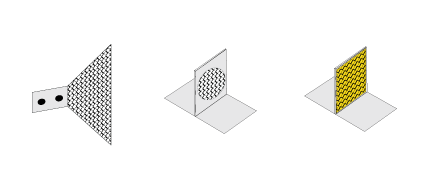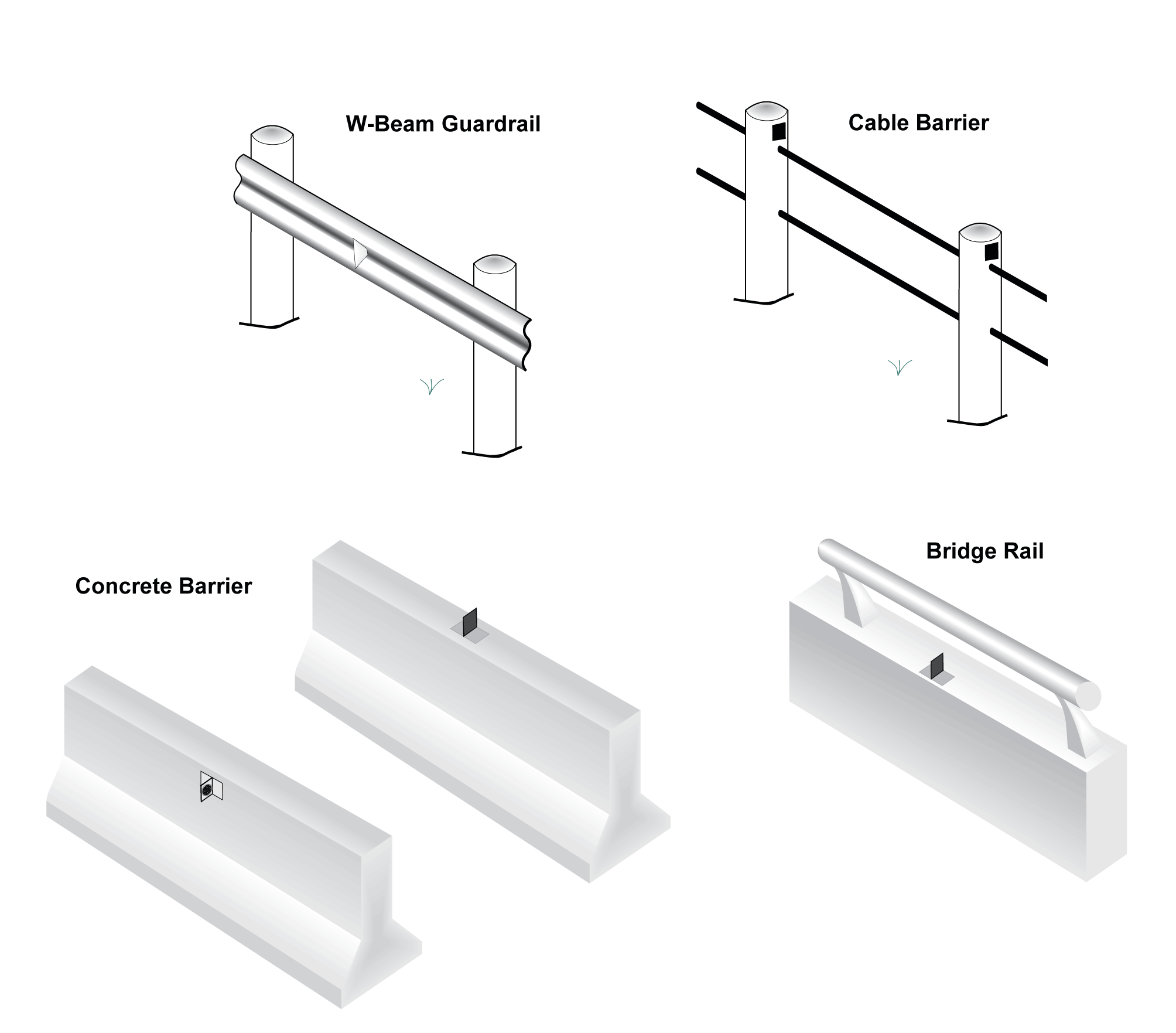Section 4: Barrier Reflectors
Anchor: #i1004079Introduction
Barrier reflectors (BR) are retroreflective devices used to inform motorists of the presence of a guardrail, bridge rail, or concrete barrier adjacent to the roadway during nighttime conditions.
Anchor: #i1004089Barrier Reflector Design
Various types of barrier reflectors may be used to mark guardrail, bridge rail, or concrete barrier. Figure 8-13 indicates some of these devices.
Figure 8-13. Barrier Reflectors
Anchor: #i1004109Barrier Reflector Application
Barrier reflectors are used on guardrail, bridge rail, or concrete barrier.
Continuous bi-directional (two-way) barrier reflectors or delineation should be provided along roadside barriers for two-way two-lane undivided roadways. For one-way and multi-lane roadways, barrier reflectors can be unidirectional (one-way).
Anchor: #i1004139Barrier Reflector Placement
- Anchor: #NPJIQGAK
- If used, barrier
reflectors should be placed in one of the following locations:
- Anchor: #TRWMUQQC
- In the depressed center section of a W-beam guardrail (butterfly type retroreflective device, see Figure 8-14), Anchor: #YRYCKEGM
- On top or on the side of concrete barrier (see Figure 8-14), or Anchor: #KWRYLHEN
- On guardrail/bridge rail posts or blockouts.
Anchor: #QTKGXHNX - Barrier reflectors should be installed a minimum of 18 inches above the edge of the pavement surface. Consistent barrier reflector height along the barrier is desired.
Figure 8-14. Typical Barrier Reflector Installation
Anchor: #i1004179Barrier Reflector Spacing
When used on straight sections of roadway, the spacing between barrier reflectors should be adjusted to ensure a minimum of three barrier reflectors are used, with a maximum spacing of 100 ft between any two barrier reflectors on guardrail or bridge rail. When barrier reflectors are used along a curved section, Table 8-3 or 8-4 should be used to determine the appropriate barrier reflector spacing up to a maximum of 100 ft. Figure 8-15 illustrates barrier reflector spacing.
Figure 8-15. Barrier Reflector Spacing


